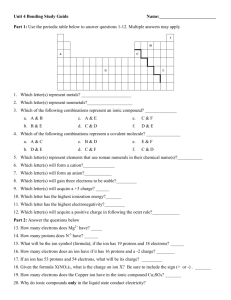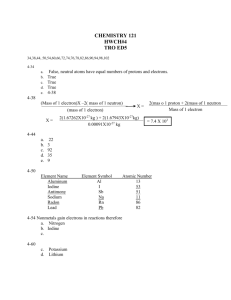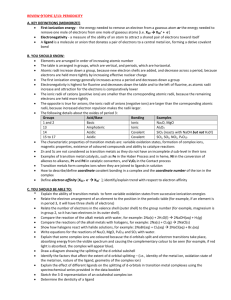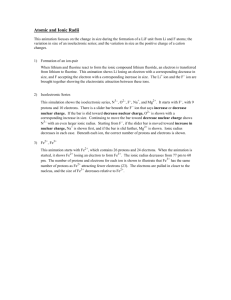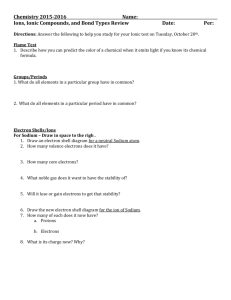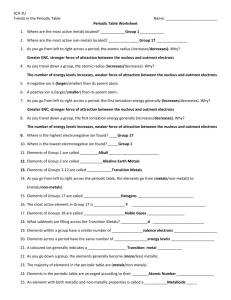CHEM 10050 - Personal.kent.edu
advertisement
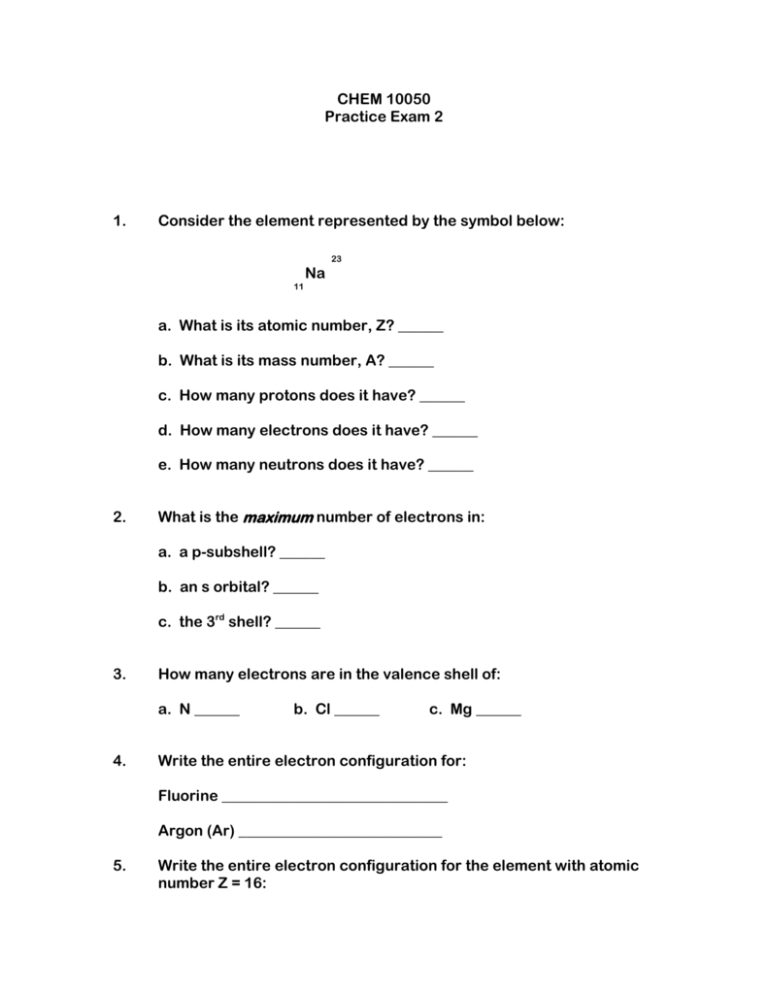
CHEM 10050 Practice Exam 2 1. Consider the element represented by the symbol below: 23 11 Na a. What is its atomic number, Z? ______ b. What is its mass number, A? ______ c. How many protons does it have? ______ d. How many electrons does it have? ______ e. How many neutrons does it have? ______ 2. What is the maximum number of electrons in: a. a p-subshell? ______ b. an s orbital? ______ c. the 3rd shell? ______ 3. How many electrons are in the valence shell of: a. N ______ 4. b. Cl ______ c. Mg ______ Write the entire electron configuration for: Fluorine ______________________________ Argon (Ar) ___________________________ 5. Write the entire electron configuration for the element with atomic number Z = 16: ______________________________________ a. How many unpaired electrons does it contain? ________ b. How many valence electrons does it contain? _________ 6. In what period and group is an element with the following electron configuration located? [Ne]3s23p2 Period number ______ Group number ______ 7. Circle the element with the larger ionic radius: 8. Circle the element with the larger ionization energy: Na or Cs 9. Circle the element with the larger electronegativity: Li or F 10. Write the correct formulas for the following ions or ionic compounds: 11. Be or O a. Lithium ion _________________ b. Fluoride ion _______________ c. Magnesium ion _____________ d. Ammonium ion ____________ e. Sulfate ion _________________ f. Potassium oxide ___________ g. Calcium hydroxide __________ h. Lithium phosphate ________ i. Ferrous chloride ___________ __ j. Copper (I) bromide_________ Matching. ______The noble gases a. Include F, Cl, Br, I ______The alkaline earth metals b. Include Fe, Co, Ni, Cu, Zn ______The halogens c. Include Li, Na, K, Rb, Cs ______The inner transition metals d. Include He, Ne, Ar, Kr, Xe ______The alkali metals e. Include Ce, Pr, Nd, Pm ______The transition metals f. Include Be, Mg, Ca, Sr 12. True or False: ______An electron has a mass of 1 and a charge of –1. ______Protons and electrons are located within the nucleus of an atom. ______Isotopes are atoms with the same number of protons, but different numbers of neutrons. ______Metals form cations by the gain of one or more electrons. ______A p-orbital is shaped like a dumbbell, and centered around the nucleus. ______Mg and Ca form ions with a charge of –2. ______An ionic bond results from an electrical attraction between ions of opposite charge. ______Ionization energy is the amount of energy required to remove an electron from a gaseous atom. ______Nonmetals are typically located on the right side of the periodic table. ______The farther from the nucleus, the greater the energy of electrons. ______The electron-dot symbol for beryllium is Be: ______Copper (II) ion is also known as cupric ion. ______4s orbitals are higher in energy than 3d orbitals.

